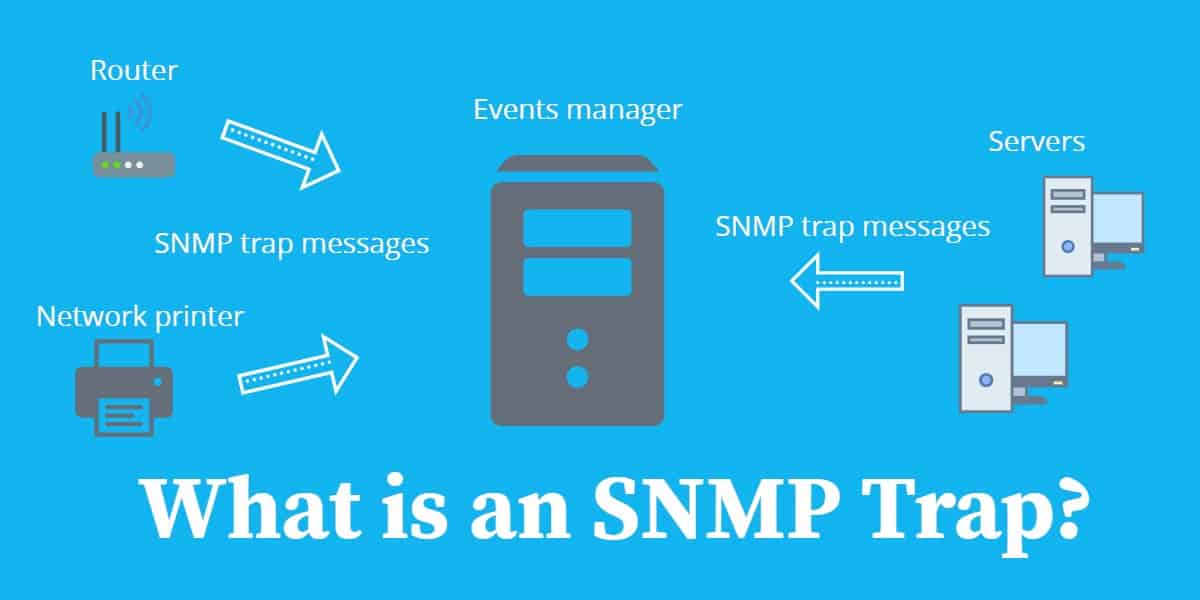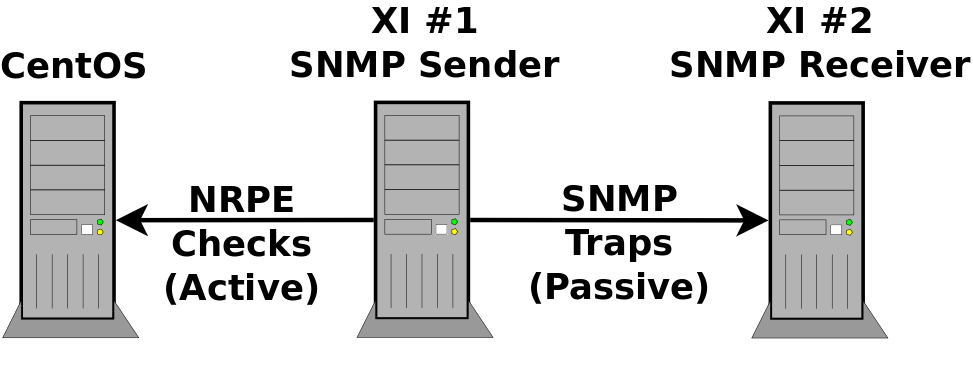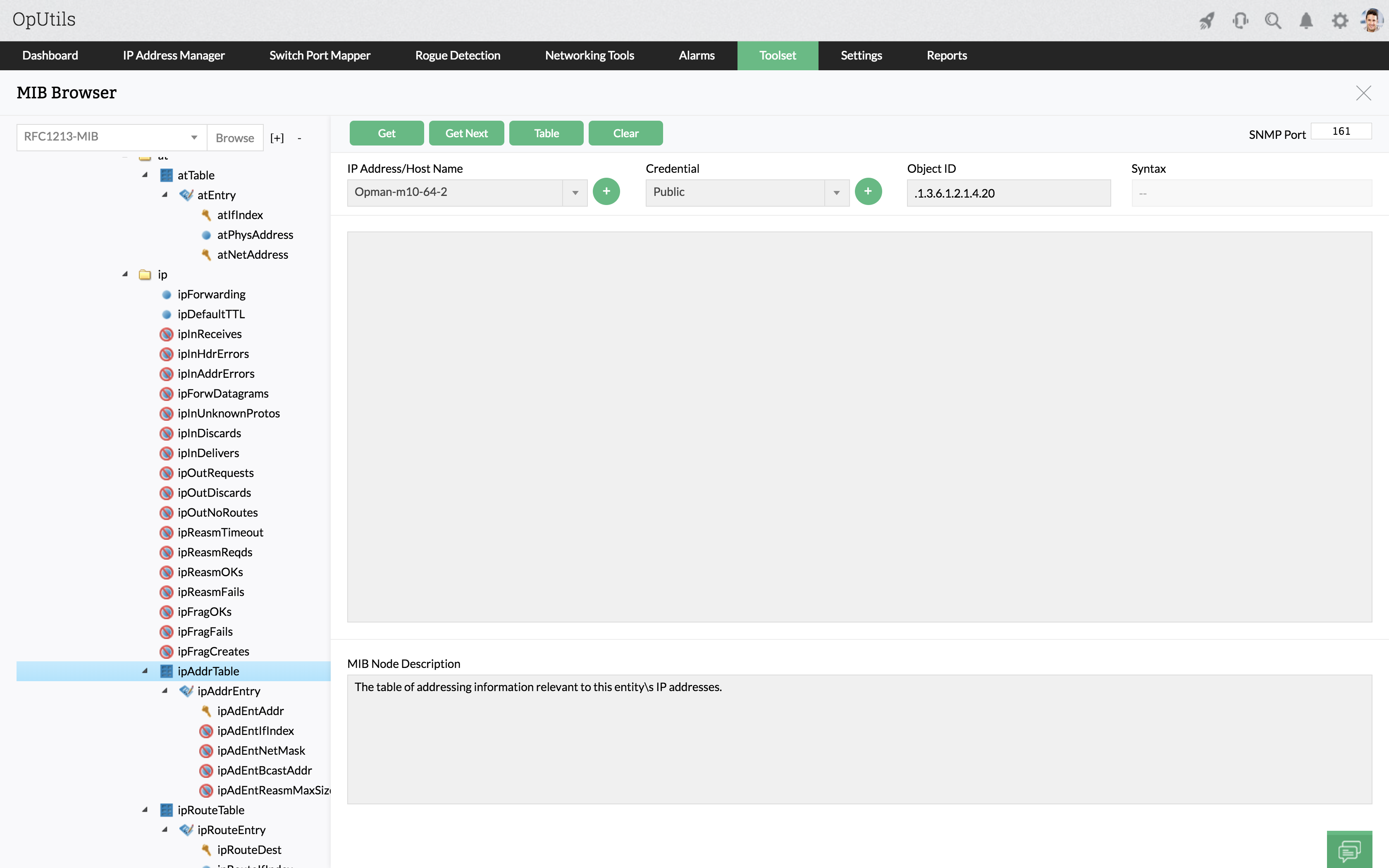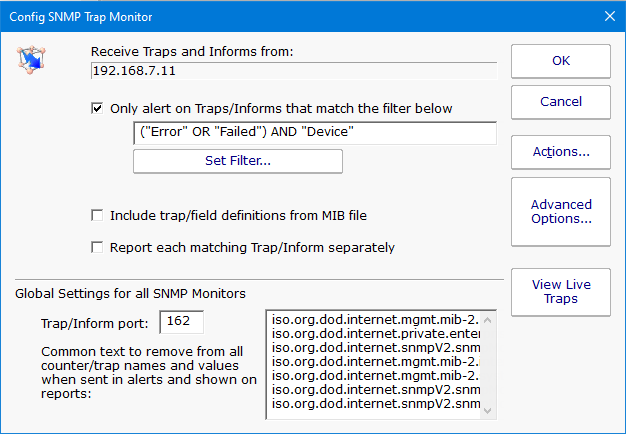
If both are available then Unbrowse SNMP prefers Winpcap. The two standard ones are "Windows Raw Sockets" and "Winpcap". The Unbrowse SNMP trap receiver can work with multiple providers. To see the name for the adapters on your system, go to Tools->Customize->Trap Console and then click on the Details button next to the selected adapter combo box.
#Snmp trap receiver read windows#
This is a GUID that Windows uses to identify the adapter. In most cases, set this to True (the default). The trap receiver will put the network adapter in promiscuous mode if this is true. If your computer has multiple network adapters, then the adapter index corresponds to the order in which they appear on the Tools->Customize->Trap Console->Select adapter window. The active network adapter number for the trap receiver. This is useful in deployments where traps are sent to ports other than the standard UDP 162Īllow List - Comma separated list of ports to allowīlock List - Command separated list of ports to block The above line allows NOTIFY and INFORMs only TrapMgr.SetVersionFilter False, True, True TrapRcv.SetVersionFilter True, False, True You can set it to a dummy value (eg, 'n') if you do not require the UI. The name part is a string that is used in the Unbrowse UI. Note : Each OID is of the form "name-oid". String - block these trap OIDs (Block List)Īllow List = comma separated list of trap OIDs to allow.īlock List = comma separated list of trap OIDs to block. String - allow these trap OIDs (Allow List) TrapRcv.SetHostFilter "192.168.1.1, 200.219.10.1",""ĪllowList = comma separated list of SNMP agents.īlock List = comma separated list of IP addresses SNMP agents Specify list of management stations or trap targets as a filter.Īllow List = comma separated list of IP addresses of management stationsīlock List = comma separated list of IP addresses of management stations

This removes the trap number 39 and reclaims its buffer space. This reclaims buffer space allowing you to run forever. After calling this method, if you attempt to reference the trap again, the server will return NULL. The traps are numbered 0 to TrapCount - 1.ĭelete the specified trap. Returns the specified trap within the database. The number of traps present in the trap database. Saves the trap database in the specified file. After processing each trap you should call DeleteTrapByIdx so that you can reclaim buffer space and run the service forever.

You can then call SaveAs to move it to your preferred location.Ĭreates a new database that buffers received traps. You must call NewDatabase or Load prior to this method.Ĭreates a new trap database in the temp folder to store incoming traps. The error message is quite descriptive and will give you more information about the error. You can mostly ignore the error number, unless you want to contact Unleash Networks for help.


You can use this event to process the traps as they arrive.įired whenever the trap receiver encounters an error. This event is fired whenever the trap receiver gets a new trap from the network. TrapRcr = WIN32OLE.New("UnbrowseSNMP.TrapReceiver") Set TrapRcvr = CreateObject("UnbrowseSNMP.TrapReceiver") You can set filters, select adapters, and process traps as they arrive using the events mechanism. This provides scripting access to start, stop, pause, resume the Unbrowse SNMP passive trap receiver. The top level object in this interface is called " UnbrowseSNMP.TrapReceiver". Check out the NewBufferDatabase and DeleteTrapByIdx methods. Newly added: Support for long running trap receiver scripts.


 0 kommentar(er)
0 kommentar(er)
